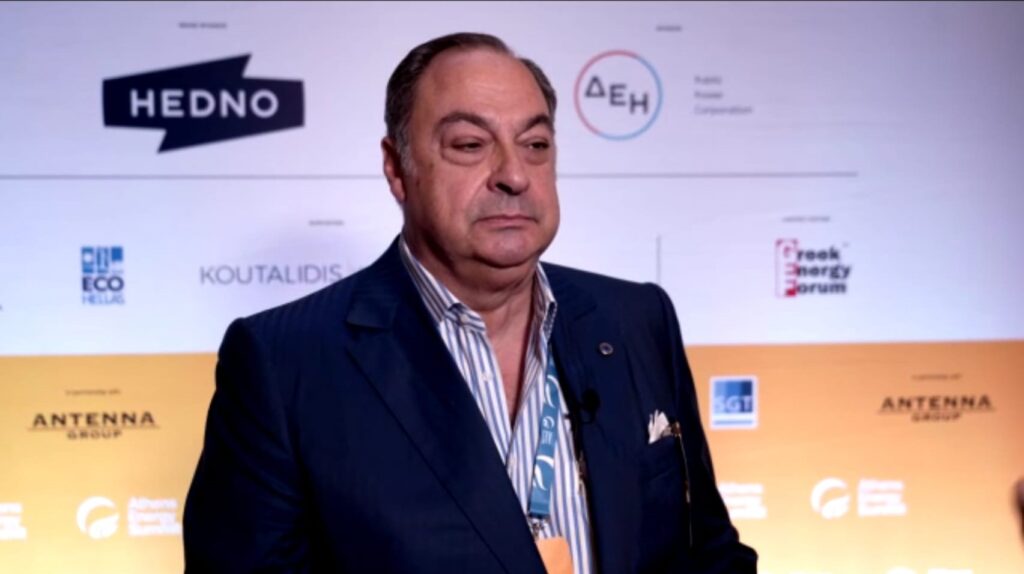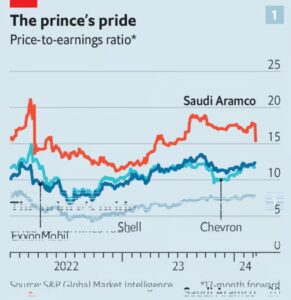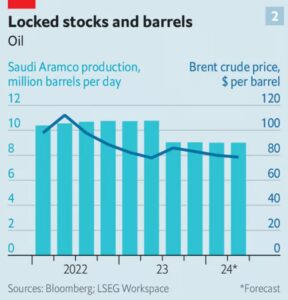China delivers heaviest offshore oil and gas platform for Saudi deployment

The Marjan oil and gas collection and transportation platform is seen as breakthrough of construction technology of large-scale offshore oil and gas platform for the Chinese builders, weighing more than 17,200 tons, making it one of the world’s largest.
The platform is expected to collect and transport 24 million tonnes of crude oil and 7.4 billion cubic meters of associated gas every year. Its platform scale, pipeline types and sizes, and system complexity all setting new records compared to similar platforms.
Construction of the project took 34 months.
Delivery of the platform project will help the Chinese industry players transform from sub-contractor to main-contractor in global offshore engineering market, said China Offshore Oil Engineering.
The platform will be transported to its installation site 6,400 nautical miles away in the waters off Saudi Arabia at the end of August to improve Marjan oilfield’s production capacity.
China advocates shared future with Five Principles of Peaceful Coexistence

This year marks the 70th anniversary of the Five Principles of Peaceful Coexistence. The commemorative conference of the 70th anniversary of the Five Principles of Peaceful Coexistence was held in Beijing on June 28. Xi Jinping, President of the People’s Republic of China, attended the commemorative conference and delivered an important speech. He expounded on the essence of the Five Principles of Peaceful Coexistence and their relevance for our times, pointed the direction for building a community with a shared future for mankind amid major global transformation, and voiced a strong message of the Global South to work with people around the world for a better future.
70 years ago, in face of the scourge of hot wars and the confrontation of the Cold War, the Chinese leadership specified the Five Principles in their entirety for the first time, namely, mutual respect for sovereignty and territorial integrity, mutual non-aggression, mutual non-interference in each other’s internal affairs, equality and mutual benefit, and peaceful coexistence. The Five Principles are included in the China-India and China-Myanmar joint statements, which jointly called for making them basic norms for state-to-state relations.
After 70 years of practice, the Five Principles of Peaceful Coexistence have set a historic benchmark for international relations and international rule of law, served as the prime guidance for the establishment and development of relations between countries with different social systems, remained a powerful rallying force behind the efforts of developing countries to pursue cooperation and self-strength through unity, and contributed historic wisdom to the reform and improvement of the international order.
Over the past 70 years, the Five Principles of Peaceful Coexistence have extended its reach from Asia to the world, transcending ideological differences, social system variations and uneven levels of development. They have become open, inclusive, and universally applicable basic norms for international relations and fundamental principles of international law, making indelible historic contributions to the cause of human progress.
Seventy years on, we are now in a volatile and unstable era where changes and turbulence are intertwined. At this historic moment when mankind has to choose between peace and war, prosperity and recession, unity and confrontation, the spirit of the Five Principles of Peaceful Coexistence has become more appealing rather than obsolete. Bearing the intertwined destinies of countries and the shared and fundamental interests of all peoples in mind, President Xi Jinping put forward the vision of building a community with a shared future for mankind, providing a new answer to what kind of world to build and how to build it. This is the best way to inherit, advance and enrich the Five Principles of Peaceful Coexistence under new circumstances.
From the Five Principles of Peaceful Coexistence to building a community with a shared future for mankind, China has remained consistent in the exploration for new ways of state-to-state relations, remained committed to our responsibility in upholding world peace and development, and remained steadfast in pursuing a just and equitable international order.
Over the past decades, the Five Principles of Peaceful Coexistence conformed to the trend for national independence and liberation in Asia, Africa and Latin America, and answered the very important question of how to handle state-to-state relations. Going forward, the Chinese initiative of building a community with a shared future for mankind has become an international consensus. The beautiful vision has been put into productive actions. It is moving the world to a bright future of peace, security, prosperity and progress.
Of all the forces in the world, the Global South stands out with a strong momentum. Standing at a new historical starting point, the great cause of building a community with a shared future for mankind requires the Global South to stay ahead of the historical trend. The Global South should be more open and more inclusive, jointly maintain peace and stability, promote open development, construct global governance, and advocate for the exchange among civilisations.
Both China and Qatar are important members of the Global South. In recent years, under the strategic guidance of President Xi Jinping and His Highness the Amir Sheikh Tamim bin Hamad al-Thani, China-Qatar relations have developed rapidly and comprehensively, serving as a model for countries with different social systems to firmly adhere to the Five Principles of Peaceful Coexistence, engage in friendly exchanges, and foster mutually beneficial co-operation.
Both China and Qatar are the staunch forces for peace, dedicated to promoting peaceful settlement of international disputes, and participating constructively in the political settlement of international and regional hotspot issues. They are core driving forces for open development, committed to restoring development as the central international agenda item with clear and feasible national development visions and goals, reinvigorating global partnerships for development, and deepening South-South co-operation as well as North-South dialogue.
China and Qatar are also construction teams of global governance and advocates for exchange among civilisations. Both countries actively participate in reforming and developing the global governance system and contribute to enhancing inter-civilisation communication and dialogue.
This year marks the 10th anniversary of the establishment of the China-Qatar strategic partnership. China wishes to work with Qatar to take this opportunity to strengthen the political foundation of bilateral relations, elevate the mutually beneficial cooperation between the two countries to a new level.
China stands ready to join hands with Qatar and other countries in the world to overcome challenges, achieve shared prosperity, create an open, inclusive, clean and beautiful world of lasting peace, universal security, and shared prosperity, build a community with a shared future for mankind, and open up a brighter future for humanity.
Global oil demand growth to cool as China slows, says EIA
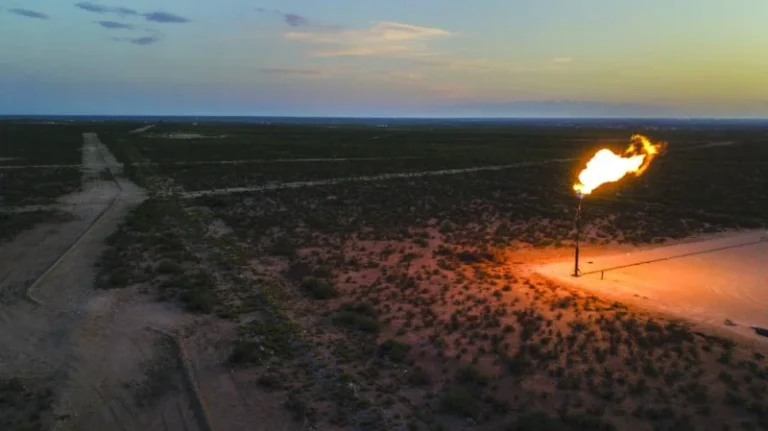
The US government’s energy-tracking agency added to a chorus of concerns about falling demand for oil next year caused by an economic slowdown in China, the world’s largest crude importer.
Global crude consumption will be about 104.5mn barrels a day in 2025, down 200,000 barrels a day from a previous forecast, cutting next year’s projected demand growth rate to 1.6%, according to a monthly Energy Information Administration report on Tuesday. The downward revision was driven by concerns that China’s economy has been slowing.
China reported its weakest economic growth in five quarters last month, and traders and banks have flagged slowing demand in Asia as a bearish factor for crude. The concerns have helped keep oil prices restrained this year even as Opec and its allies dial back production and the conflict in the Middle East raises the risk of supply disruptions in the region.
Despite signs of an economic slowdown across the Pacific, jet fuel remains a bright spot in US consumption. Increased air travel led to an upward revision in projected demand for the fuel this year, and next year’s consumption is still expected to exceed pre-pandemic levels, the EIA said.
The EIA also dialled back forecasts for US oil production growth amid a wave of corporate consolidation and efforts to boost output while using less gear. While the EIA still expects US production to increase this year and next, its forecasts were revised down from last month’s report by 0.2% for this year and 0.6% for 2025.
The figures are the latest sign the US shale patch is growing more modestly after last year’s surprising pop in production that added more than 1mn barrels a day.
Still, the expansion in annual US oil production — the EIA projects 2.3% growth this year to 13.23mn barrels a day and an additional 3.5% increase next year — shows producers are achieving the efficiency gains in drilling and fracking that allows them to grow output.
“We are clearly doing more with less and becoming more operationally efficient each quarter,” Diamondback Energy Inc, one of the biggest producers in the Permian Basin of West Texas and southeast New Mexico, wrote in a letter to stockholders this week.
The Permian, which is the world’s largest shale field, is forecast to add a modest 20,000 barrels a day through the end of this year and another 340,000 barrels of production next year, according to the latest EIA projections.
‘Prerequisites for peace’: Expert applauds Skylakakis for endorsing energy transition policies that ‘open the way to dialogue and cooperation’

ATHENS, July 7, 2024 Greece: Energy and Environment Minister Theodoros Skylakakis is on the right track with his approach to Greece’s energy transition plans, a noted regional expert says.
“He’s got the right perspective,” industry veteran and author Roudi Baroudi said after Skylakakis spoke at this week’s Athens Energy Summit. “He understands that although the responsibility to reduce carbon emissions is universal, the best policy decisions don’t come in ‘one-size-fits-all’.”
Baroudi, who has more than four decades in the field and currently serves as CEO of Doha independent consultancy Energy and Environment Holding, made his comments on the sidelines of the forum, where he also was a speaker.
In his remarks, Skylakakis expressed confidence that Greece’s increasing need to store electricity – as intermittent renewables generate a growing share of electricity – would drive sufficient investment in battery capacity, without the need for subsidies. Among other comments, he also stressed the need for European Union policymakers to account for the fact that member-states currently face the cost s of both limiting future climate change AND mitigating the impacts that are already under way.
“Every country is different in terms of how it can best fight climate change. Each one has its own set of natural resources, industrial capacity, financial wherewithal, and other variables. What works in one situation might be a terrible idea elsewhere. That’s crucial and Skylakakis gets it,” Baroudi said. “He also understands that an effective transition depends on carefully considered policies, policies that attract investment to where it can not only have the greatest impact today, but also maximizes the impact of tomorrow’s technologies and tomorrow’s partnerships.”
“What Skylakakis is saying and doing fits in nicely with many of the same ideas I spoke about,” Baroudi added. “When he talks about heavier reliance on wind farms, the added storage capacity is a foundation that will help derive a fuller return from each and every turbine. When he highlights the utility – pun intended – of power and gas interconnections with other countries and regions, these are the prerequisites for peace, the building blocks for cooperation and dialogue.”
In his own speech shortly after Skylakakis’, Baroudi told the audience at the capital’s Hotel Grande Bretagne that countries in the Eastern Mediterranean should work together to increase cleaner energy production and reduce regional tensions.
“Surely there is a method by which we can re-establish the same common ground enshrined in the wake of World Wars I and II, recall the same common interests and identify new ones, and work together to achieve common goals, just as the UN Charter implores us to,” he said.
Baroudi advises companies, governments, and international institutions on energy policy and is an award-winning advocate for efforts to promote peace through dialogue and diplomacy. He told his audience that with both climate change and mounting geopolitical tensions posing threats to people around the world, policymakers needed to think outside the usual boxes.
In this way, he argued, “we might develop the mutual trust which alone can create a safer, happier, and better world for our children and grandchildren.”
“Consider the possibilities if Greece, Türkiye, and Cyprus became de facto – or de jure – partners in a pipeline carrying East Med gas to consumers in Bulgaria, Romania, and Italy,” he said. “Imagine a future in which Israeli and Lebanese gas companies were similarly – but independently – reliant on the same Cypriot LNG plant for 10-20%, or even more, of their respective countries’ GDPs.”
He also envisioned bilateral cooperation scenarios between Greece and Turkey and Syria and Turkey, as well as a regional interconnection that would provide backup energy for multiple coastal states.
“Instead of accepting certain ideas as permanently impossible, we ought to be thinking ahead and laying the groundwork,” Baroudi said. “For Greece and Türkiye – as for other pairs of coastal states in the region – a good starting point would be to emulate the Maritime Boundary Agreement agreed to by Lebanon and Israel in 2022.”
Stressing the potential for cooperation to address both energy requirements and the stability required for stronger growth and development, Baroudi – whose books include a 2023 volume about the Lebanon-Israel deal and a forthcoming one urging other East Med countries to do the same – called on the EU to take up the challenge.
“Using dialogue and diplomacy to expand energy cooperation would benefit not just the countries of the East Med but also the entire European Union and much of its surrounding ‘neighborhood’,” he told an audience of energy professionals and key government officials. “That level of promise more than merits the attention of Brussels, the allocation of support resources, and even the designation of a dedicated point-person tasked with facilitating the necessary contacts and negotiations.”
“This is how we need to be thinking if we want to get where we need to go,” Baroudi said. “Instead of allowing ourselves to be discouraged by the presence of obstacles, we need to be investigating new routes that go around them, strengthen the rule of law – especially human rights law – as a basis for the international system, and promote lasting peace among all nations. Only then can we declare victory over what the 18th-century Scottish poet Robert Burns called ‘man’s inhumanity to man’.”
الخبير في مجال الطاقة رودري بارودي: دول شرق البحر المتوسط يجب أن تتعاون بمجال الطاقة

أشار أحد اهم الخبراء في مجال الطاقة رودي بارودي، في مؤتمر انعقد في أثينا، إلى أن “دول شرق البحر الأبيض المتوسط يجب أن تتعاون مع بعضها لزيادة إنتاج وتصدير الطاقة والتخفيف من التوترات الإقليمية”.
وقال بارودي امام المشاركين في المؤتمر: “يجب ان نضع في الاعتبار الاحتمالات الايجابية إذا أصبحت اليونان وتركيا وقبرص شركاء بحكم الواقع أو بحكم القانون في خط أنابيب ينقل غاز شرق المتوسط إلى المستهلكين في بلغاريا ورومانيا وإيطاليا، وان نتخيل مستقبلًا تعتمد فيه شركات الغاز الإسرائيلية واللبنانية ولكن بشكل مستقل على نفس مصنع الغاز الطبيعي المسال في قبرص”.
وأضاف بارودي “لنتصور اهمية وايجابية سيناريوهات التعاون الثنائي بين اليونان وتركيا من جهة وسوريا وتركيا من جهة ثانية إضافة إلى الترابط الإقليمي الذي سيوفر طاقة احتياطية لدول ساحلية متعددة”، لافتا إلى أنه “بدلاً من قبول أفكار معينة على أنها مستحيلة بشكل دائم، يجب أن نفكر في المستقبل ونضع الأساس لاعمال ايجابية مشتركة على ان تكون نقطة البداية الجيدة مماثلة لاتفاقية الحدود البحرية بين لبنان وإسرائيل في عام 2022”.
وشدد بارودي أمام حشد من المتخصصين في مجال الطاقة ومسؤولين حكوميين على أن “استخدام الحوار والدبلوماسية لتوسيع التعاون في مجال الطاقة لن يفيد فقط دول شرق البحر المتوسط ولكن أيضًا جميع دول الاتحاد الأوروبي والكثير من” الجوار “المحيط به وان هذا الاستحقاق المهم يستحق أكثر من اهتمام بروكسل، لا بل يستحق تخصيص موارد الدعم،وتعيين موفد مكلف بتسهيل الاتصالات والمفاوضات اللازمة”.
وختم بارودي بالقول: “هذه هي الطريقة الفضلى التي نحتاجها للتفكير إذا أردنا الوصول إلى حيث يجب ان نكون بدلاً من السماح لأنفسنا بالإحباط بسبب وجود عقبات،فنحن نحتاج إلى التفتيش عن طرق جديدة وحديثة تلتف على الافكار والمواقف القديمة، وتعزيز سيادة القانون وخاصة قانون حقوق الإنسان كأساس للنظام الدولي، وتعزيز السلام الدائم بين جميع الدول،عندها فقط يمكننا إعلان النصر على ما أسماه الشاعر الاسكتلندي روبرت بيرنز في القرن الثامن عشر: وحشية الإنسان للإنسان”.
Potential Qatar-Greece investment ties seen in energy, high-tech industries
Greece’s economic resurgence with Prime Minister Kyriakos Mitsotakis at the helm is seen to open potential Qatari investments in a wide range of sectors, including energy, tourism, and high-tech industries.
In an exclusive interview with Gulf Times, Energy and Environment Holding CEO Roudi Baroudi underscored the growing bilateral ties of both countries, saying Qatar is well-positioned to capitalise on Greece’s economic stability, which has been attracting foreign direct investments (FDI).
“After the bond and fiscal crisis that Greece went through in 2012-2014, it took them a few years of solid reconsolidating their books with the assistance of the IMF, the World Bank, and especially the EU…the stupendous economic growth brought about by Prime Minister Mitsotakis has brought a lot of FDI back.
“Qatar has always had certain private investments in the financial and energy sectors. Today, Greece is a hub for diverse investment opportunities and its economy is open to different markets other than just tourism, real estate, and industry, but they have direct access to Europe, as well, in terms of oil and gas,” Baroudi explained.
Baoudi noted that the energy sector, particularly liquefied natural gas (LNG), is vital in enhancing further Qatar-Greece investment opportunities and economic ties. He also said Qatar’s decades-long expertise in the LNG industry could help catalyse Greece’s bid to become a major logistics centre.
“Greece has probably the largest ships, crude tankers, and gas tankers in the world, making them one of the leaders in the global maritime business. Qatar’s LNG capabilities are already well-established with more than a dozen LNG ships working for QatarEnergy subsidiaries,” Baroudi noted.
At the Qatar Economic Forum held in Doha last month, HE the Minister of Finance Ali bin Ahmed al-Kuwari emphasised that Qatar’s energy sector is performing “very well,” citing QatarEnergy’s plans for a new LNG expansion project that would further raise the country’s LNG production capacity to 142mn tonnes per annum.
Al-Kuwari said, “We are going to increase Qatar’s (liquefied natural gas) production by 85% in a phased manner until 2030. We are going to be reaching 142mn tonnes per annum of LNG.”
According to Baroudi, recent developments in Qatar’s energy industry could extend potential investment opportunities with Greece beyond shipping to LNG infrastructure. “Qatar’s expertise could be crucial as Greece expands its LNG port to supply gas to neighbouring countries following the Ukraine-Russian war. QatarEnergy is also making strategic investments in the Eastern Mediterranean, such as in Cyprus and Egypt as part of a larger regional strategy,” he said.
Baroudi also pointed to knowledge exchange as another avenue for collaboration and investment in terms of port management. “There is no question that Hamad Port will benefit a lot from further co-operation with the Port of Piraeus, which is Greece’s largest port, and the second largest in the Mediterranean,” Baroudi stated.
Asked about potential partnerships outside the energy sector and port management, Baroudi said both countries could also forge joint opportunities in digital connectivity, artificial intelligence (AI), and clean tech. Among other industries, Baroudi also noted that Qatar could expand its tourism and hospitality footprint amidst Greece’s favourable economic environment.
QatarEnergy to acquire two new exploration blocks offshore Egypt
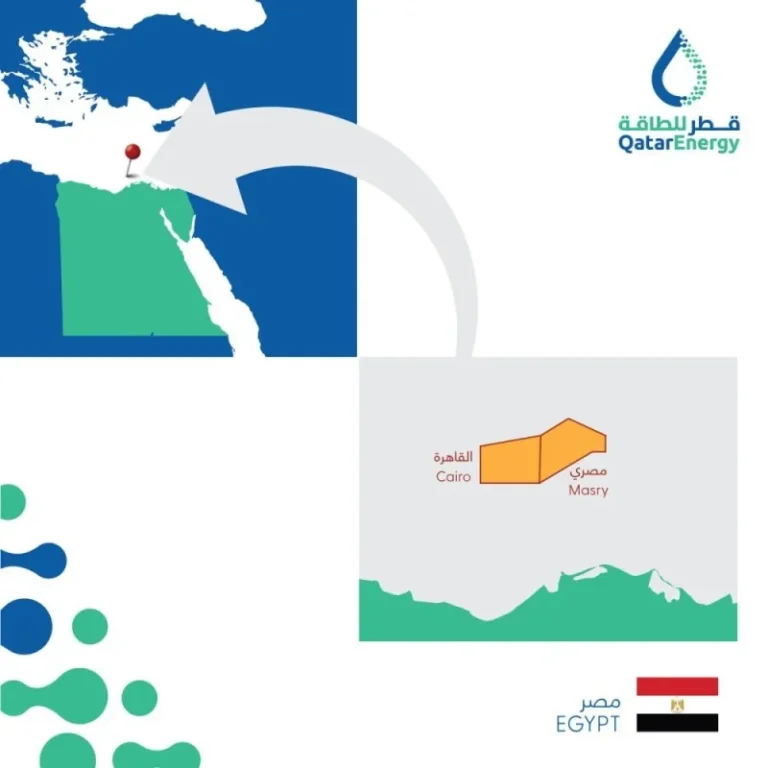
QatarEnergy has signed a farm-in agreement with ExxonMobil to acquire a 40% participating interest in two exploration blocks offshore Egypt.
Under the terms of the agreement, which is subject to customary approvals by the government of Egypt, QatarEnergy will acquire a 40% working interest in each of the “Cairo” and “Masry” Offshore Concession Agreements, while ExxonMobil (the Operator) will retain the remaining 60% working interest.
Commenting on the signing of this agreement, HE Minister of State for Energy Affairs, the President and CEO of QatarEnergy Eng. Saad bin Sherida Al Kaabi said: “I am pleased with our entry into the Cairo and Masry offshore exploration blocks as they expand QatarEnergys presence in the Arab Republic of Egypt and extend our ambitious exploration program in-country.”
“We look forward to working with our valued long-term strategic partner ExxonMobil, as well as with the Egyptian Natural Gas Holding Company (EGAS) and the Egyptian Ministry of Petroleum and Mineral Resources, in this promising and prospective region. I would like to take this opportunity to thank the Egyptian authorities and our partners for their valuable support and cooperation,” His Excellency added.
The Cairo and Masry offshore exploration blocks were awarded to ExxonMobil in January 2023, and cover an area of approximately 11,400 square kilometers in water depths of 2,000 to 3,000 meters.
Opec sticks to oil demand view, nudges up economic growth
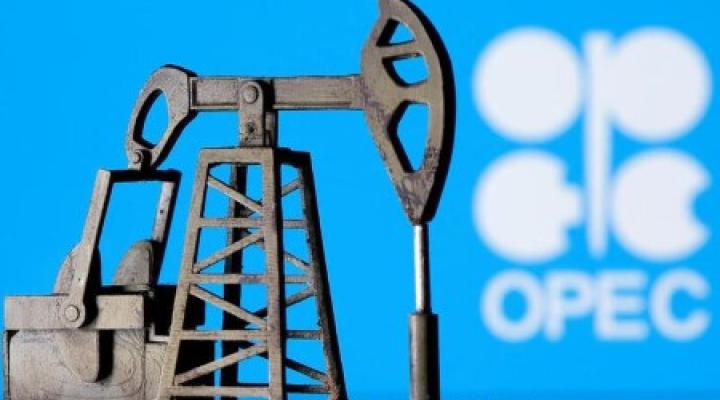
BULLISH OPEC, CAUTIOUS IEA
Is Saudi Aramco cooling on crude oil?

Don’t bet on it
Has saudi arabia stopped believing in a bright future for petroleum? That is the question that in recent weeks has hung over Saudi Aramco. The desert kingdom’s national oil goliath has a central position in the world’s oil markets. Its market value of $2trn, five times that of the second-biggest oil firm, ExxonMobil, and its rich valuation relative to profits are predicated in large part on its bountiful reserves of crude and its peerless ability to tap them cheaply and, as oil goes, cleanly (see chart 1). So Saudi Arabia’s energy ministry stunned many industry-watchers in January by suspending the firm’s long-trumpeted and costly plans for expanding oil-production capacity from 12m to 13m barrels per day (b/d). Was it proof that even the kingpin of oil had finally accepted that oil demand would soon peak and then begin to decline?
To get a hint of Aramco’s answer, all eyes turned to its financial results for 2023, reported on March 10th. No one expected a repeat of the year before, when high oil prices and surging demand propelled Aramco’s annual net profit to $161bn, the highest ever for any listed firm anywhere. But analysts and investors were still keenly interested in the extent of the decline in the company’s revenue and profit, in any changes to its capital-spending plans and, possibly, in the unveiling of an all-new strategy.
In the event, profits did fall sharply, from $161bn in 2022 to $121bn last year, though that was still the second-best performance in the company’s history. Thanks to a recently introduced special dividend, Aramco paid nearly $100bn to shareholders last year, 30% more than amid the bonanza of 2022. It also promised to hand over even more in 2024.
Has saudi arabia stopped believing in a bright future for petroleum? That is the question that in recent weeks has hung over Saudi Aramco. The desert kingdom’s national oil goliath has a central position in the world’s oil markets. Its market value of $2trn, five times that of the second-biggest oil firm, ExxonMobil, and its rich valuation relative to profits are predicated in large part on its bountiful reserves of crude and its peerless ability to tap them cheaply and, as oil goes, cleanly (see chart 1). So Saudi Arabia’s energy ministry stunned many industry-watchers in January by suspending the firm’s long-trumpeted and costly plans for expanding oil-production capacity from 12m to 13m barrels per day (b/d). Was it proof that even the kingpin of oil had finally accepted that oil demand would soon peak and then begin to decline?
image: the economist
To get a hint of Aramco’s answer, all eyes turned to its financial results for 2023, reported on March 10th. No one expected a repeat of the year before, when high oil prices and surging demand propelled Aramco’s annual net profit to $161bn, the highest ever for any listed firm anywhere. But analysts and investors were still keenly interested in the extent of the decline in the company’s revenue and profit, in any changes to its capital-spending plans and, possibly, in the unveiling of an all-new strategy.
In the event, profits did fall sharply, from $161bn in 2022 to $121bn last year, though that was still the second-best performance in the company’s history. Thanks to a recently introduced special dividend, Aramco paid nearly $100bn to shareholders last year, 30% more than amid the bonanza of 2022. It also promised to hand over even more in 2024.
Shovelling a larger chunk of a smaller haul to owners could, on its own, imply that the company is indeed less gung-ho about its oily future. Except that the rich dividend was accompanied by two developments that point in the opposite direction. First, Aramco is rumoured to be preparing a secondary share offering that could raise perhaps $20bn in the coming months—a move typically associated with expansion rather than contraction. Second, even more tangibly, Aramco is already ramping up capital spending.
Its annual results reveal that investments rose from less than $40bn in 2022 to around $50bn last year. In a call with analysts on March 11th Aramco confirmed that the suspension of its planned capacity expansion will save around $40bn in capital spending between now and 2028. But, it added, that does not mean Aramco is not investing. On the contrary, the aim is to spend between $48bn and $58bn in 2025, and maybe more in the few years after that.
A bit of that money will go to clean projects such as hydrogen, carbon capture, renewables and other clean-energy technologies. Some will go to cleanish ones, such as expanding Aramco’s natural-gas production by over 60% from its level of 2021 by 2030, and backing liquefied-natural-gas projects abroad. But most is aimed at ensuring that Aramco can maintain its ability to pump up to 12m b/d of crude.
Given the company’s actual output of around 9m b/d (see chart 2), this does not compromise its ability to move markets. If anything, it strengthens Aramco’s position because it implies spare capacity of 3m b/d—above the company’s historic average of 2m-2.5m b/d, according to Wood Mackenzie, a consultancy. The world’s biggest oil firm is, in other words, committed both to pumping oil and to preserving Saudi Arabia’s role as the market’s swing producer.
That is in part because the company is also committed to pumping money into the economic vision for Saudi Arabia championed by Muhammad bin Salman, the kingdom’s crown prince and de facto ruler. This became more evident on March 7th, when Aramco announced the transfer of 8% of its shares, worth $164bn, out of the hands of the government and into the Public Investment Fund (pif), a vehicle for Saudi sovereign wealth which Prince Muhammad has tasked with diversifying the economy. This leaves the pif with 16% of Aramco, compared with the 2% or so that is owned by minority shareholders and traded on the Riyadh stock exchange (the rest remains directly in the government’s hands).
In light of all this, Saudi Arabia’s plans to suspend the expansion of production capacity do not reflect a u-turn away from hydrocarbons. Rather, the pause is born of a hard-headed assessment of market realities: a surge in oil production in the Americas, soft demand in China and cuts to output from the opec cartel (of which Saudi Arabia is the most powerful member). As Amin Nasser, Aramco’s chief executive, summed it up in the results presentation, “Oil and gas will be a key part of the global energy mix for many decades to come, alongside new energy solutions.” And so will Aramco. ■

